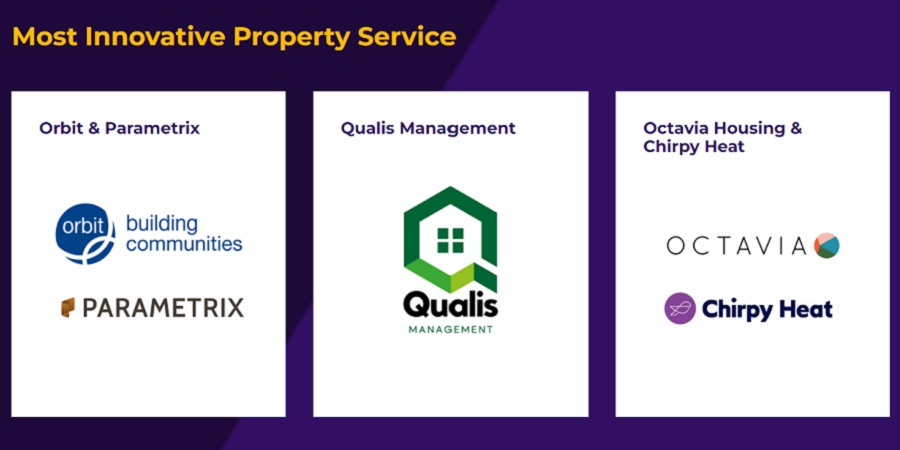Emerging Trends in Construction
In January 2020 I presented at the National Housing Maintenance Forum Conference on the theme of Emerging Trends in Construction. I wanted to focus on the undercurrents that I think will significantly affect social housing organisations as construction clients over the next few years.

I see these as having a clear direction of travel and consequently I would advise that these trends require an active response - discussed, considered, agreed and communicated, with a clear understanding of implications. And by implications I don’t mean cost; I mean value and outcomes, missed opportunity, risk and resilience, and the operational delivery of organisational values.
Let’s consider the trends:
Modern Methods of Construction
MMC seems to be gaining more consistent traction for two reasons: firstly, a realisation that the answer to housing supply is not more bricklayers, and secondly the connection between well-engineered products and sustainability. But the most significant thing to hardwire into your MMC thinking is that it is not a strategic issue for the sector, it is an operational response to a strategic question, namely: what performance, quality and outcome do you want from the buildings you invest in? The skill is in having the capability to understand the responses, and risk profile, within the responses you get. So it’s CC – Client Culture – much more than MMC.
Digital construction
No-one likes to talk about Building Information Modelling (BIM), but make no mistake: as long-term asset owners we need to understand and be effective when it comes to information. The ‘Golden Thread’ is the tip of the iceberg, and I often say that we don’t manage properties, we manage information. BIM is a very good carrier for change, but it’ll hit you where it hurts – yes, I’m talking organisational culture. This is not a challenge of technology. More here.
Carbon
There are many sources of carbon emissions, housing just happens to one of the more controllable ones. Carbon reduction is coming your way, an early indication being the Future Homes Standard. But there will be more, and organisations need to think how they are going to create the financial capacity to meet them because the bulk of the resources needed are not going to come from Government.
Talent attraction
You are competing for enthusiastic, collaborative, creative people. This is not code for ‘young’, but demographics being what they are, most people entering the labour market are young. And they have a very different set of expectations and values, and this means that if you aren’t using technology in a practical, forward-thinking way, and if your values are better as lanyard ink than a driver of behaviour and outcomes, they will not be very interested in working with you.
Productivity
I would argue that most of the social housing sector doesn’t really understand productivity, what it can deliver, or how to engage with it. This is unfortunate, because productivity is critical in rethinking how we gain value and financial capacity. Take Lean as an example; this is based on four principles, in a very deliberate order: Easier, Better, Faster, Cheaper. Focusing on the last one completely distorts the first three, but as construction clients it is almost exclusively where the focus is. But the most significant point about productivity is access to Government and influence. There is a long queue at the doors marked ‘subsidy’ and ‘regulation’. Don’t join the queue. Go to the door marked ‘productivity’. Social landlords are transformative agents because of their scale; there is a conversation we can have here, and I suspect it is one where our thinking and client culture will benefit from the challenge.
Procuring for Value
PFV = Client-led, outcome-focused, and costed over the long term. This is the natural home of social landlords. I’m not really too concerned whether you call it PFV or not, if your procurement operates on these principles then you are starting to create opportunity and financial capacity. PFV is a major cultural challenge, and is absolutely dependent on active and sophisticated clienting, but the potential for transformation – outcomes, organisational values, genuine tenant agency and attracting talent into a vibrant, meaningful sector – is huge.
We don’t manage properties, we manage information
Summary
You may have noticed that I haven’t mentioned Grenfell. This is not casual disregard, as I hope my article in Inside Housing made clear. I do however think Grenfell was symptomatic of dependence on regulation, and woeful clienting practice. I see this as a cultural issue within the sector, so how do we meaningfully shift these dials? The answer for me is active engagement with value, outcomes, information, technical capability – and maintaining a clear line of sight from intent to operational outcome. Grenfell signifies a demand for a values-driven sector to live up in a much more meaningful, consistent way to those values every time it invests in construction. Remember that the game changer from Grenfell was the fact that when the sector was asked basic – not searching – questions about the structure, history, specifications, workmanship and risk of the buildings under its management, it just didn’t know the answers. This should never be forgotten.
Earlier I mentioned BIM. We are at an early stage of this journey, but other sectors are using digital twins of assets to learn, create better outcomes, reduce risk and uncertainty, and feed machine learning and AI. We are behind this curve, but over time this will translate from a missed opportunity into something you have to do to be investible. I am concerned that the sector is putting itself in a future position that is similar to the current one regarding cladding and building safety, namely having to invest huge amounts to get up to speed, as the same time as everyone else, while working to some extent in the dark. Playing catch up to get to where we should be in any case reduces our financial capacity for our core mission and damages our reputation. So, what trends represent a similar risk, and what are we doing in response?
I suspect that anyone reading this doesn’t work for a social landlord because they want to spend the day not breaking the law at minimum cost. I am excited about what social landlords could deliver and transform as active and sophisticated clients, in contrast to business as usual. Trends are there; you may see different ones, and I’d love to have that conversation. Finally, I see real opportunity, and deep-rooted challenges. But I don’t see passive clienting as an option for how we go forward.


